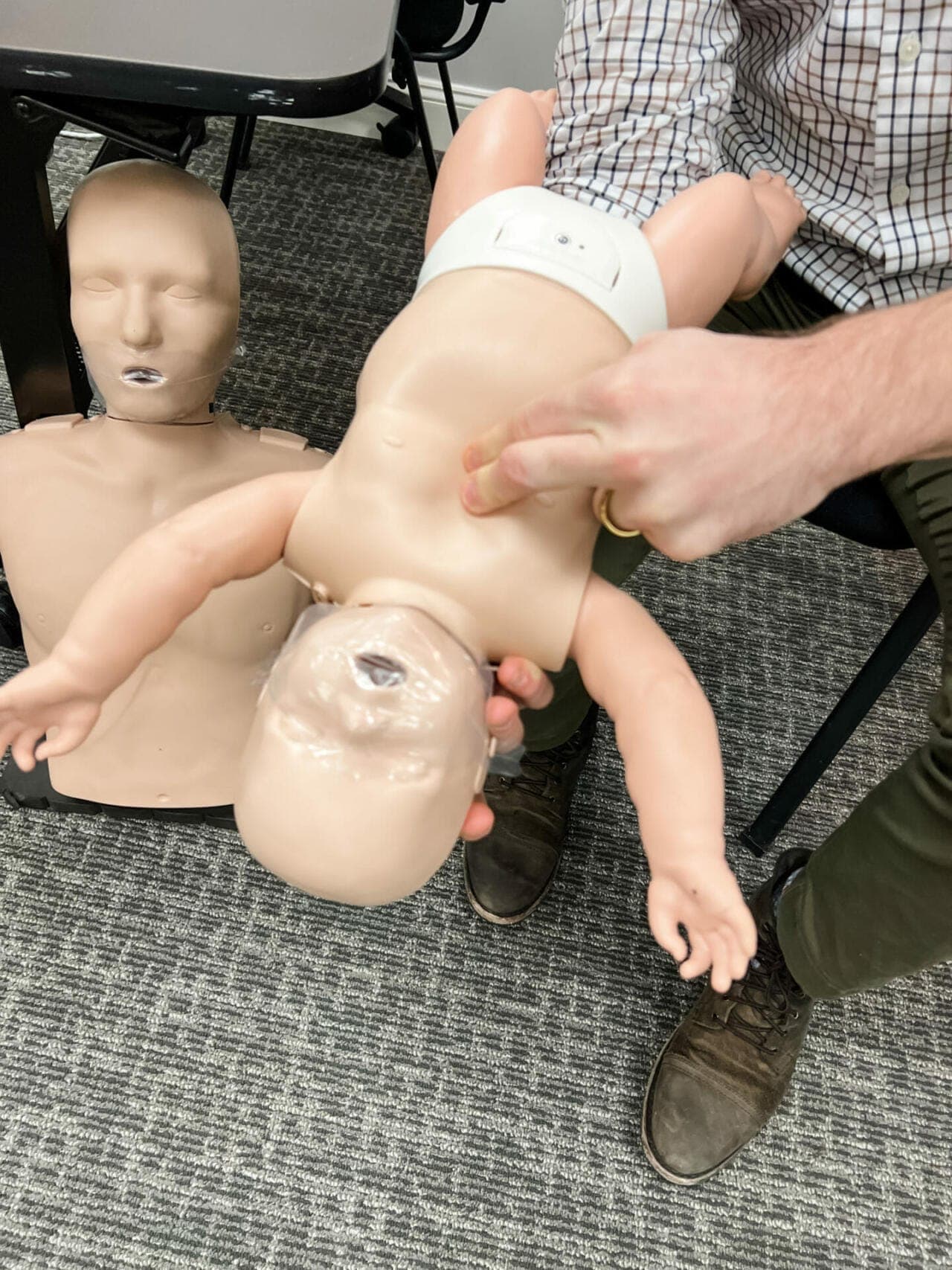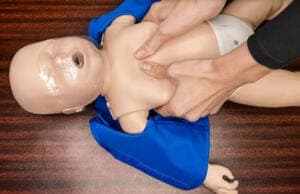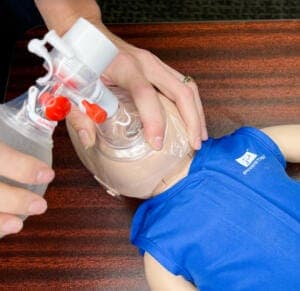What to Look for in Infant CPR Manikins

If you are a CPR instructor comparing your options for infant CPR manikins, we want to help you understand what to look for while shopping! CPR manikins are a big investment and it’s important to really consider what you purchase.
What can infant CPR manikins be used for?
No one wants to think about a baby needing CPR. However, an unfortunate reality exists where babies sometimes need CPR. Therefore, it is important that we practice CPR on infant manikins, the same way we practice CPR on adult manikins. Because CPR is not safe to practice on live victims, we practice on manikins.
Using infant CPR manikins gives students a realistic way to practice the delivery of breaths and compressions on a baby. The more comfortable people are with performing CPR on a manikin, the more comfortable they should be performing the lifesaving skill in an emergency. Additionally, depending on the manikin, training may be more realistic and help students practice the skills without error and give higher quality CPR.
Practicing Compressions on an Infant CPR manikin
The American Heart Association teaches that CPR compressions should go at least 2 inches deep on adults and 1.5 inches deep on an infant. Because of the difference in depth of compression and how compressions are delivered, it is vital that students train on infant manikins that allow this to be practiced
It used to be that infant manikins were substituted with baby dolls. However, using dolls or teddy bears simply does not allow students to simulate a real emergency situation. When infant CPR manikins were initially designed, they were more of a cheaper training add-on for instructors to supplement adult CPR training with. Often times these infant manikins were made of a soft fabric and pillow-like material. Without internal mechanisms to offer a realistic training scenario, people often failed to adequately perform CPR on infants.
A company called PRESTAN started manufacturing CPR manikins in 2004 and eventually introduced new infant manikins to the training industry. PRESTAN Professional Infant Manikins are proportionately accurate and have features that give students realistic training. Prestan infant manikins are made from a latex-free plastic material with chest foam that has similar density to that of an infant.
Upon introduction to these manikins in CPR classes, many students would comment on how doing CPR on an infant was ‘more difficult than they thought.’ Because manikins were not made this way before, most people were not performing chest compressions deep enough on infants. These manikins make a dramatic difference in educating students on what real-life CPR entails.

In training with these manikins, some students will have trouble performing two-finger compressions. It’s important that the instructor explain that these manikins are lifelike and if you struggle with this technique on a manikin you may want to consider the two-thumb method for the highest quality compressions.
Practicing Giving Breaths on a Baby CPR Manikin
Infants are significantly more oxygen dependent than adults, therefore there is an emphasis on delivering rescue breaths to infants. Rescue breaths are given to any infant that is not breathing on their own. If they are also in cardiac arrest and have no heart beat, two rescue breaths should be given in between sets of compressions. (For two rescuers: 15 compressions followed by 2 breaths and for single rescuers: 30 compressions followed by 2 breaths.)
You will want to purchase infant CPR manikins that allow students to practice giving breaths and know if they’re effective. Some manikins will have actual airways with ‘lungs’ inside the manikin that rise and fall just a like a real infants lungs would.

Additionally, you will want a manikin that has a head that functions like a real infants head. In CPR classes, it’s taught that you tilt the victims head back to open their airway. After performing the head tilt, chin lift, you can give breaths to the victims. To understand why this is important, put your chin to your chest and you will notice a decreased ability to breathe. This is why it’s important to practice putting the victims head in a neutral position. We always recommend practicing like we play and in CPR, that means you want a manikin that allows you to practice this technique.
Feedback Devices in Infant CPR Manikins
CPR Training brands such as the American Heart Association (AHA) and the American Red Cross (ARC) require that CPR manikins have feedback devices on all adult manikins as of 2019. Although it’s not required for infant manikins at this time, it’s likely it will be required in the near future. You should make sure to invest in manikins that won’t need to be updated when this requirement is added.
A CPR feedback device has a sensor in the chest of the manikin and a light or sound that will indicate the effectiveness of the compressions. Feedback devices allow students to know if the compressions would be effective in a real-life CPR scenario. Real time feedback also makes the instructors job easier by allowing students to adjust their technique without relying only on the instructors observation.
Diversity Inclusion
You can purchase infant manikins in different skin tones to make your classroom training inclusive. PRESTAN makes their manikins in a medium and dark skin. They also offer diversity value packs with manikins of varying skin tones. Having manikins that represent the makeup of your students can make your classes more engaging and the training hit more close to home.
Overview
Look for CPR infant manikins that allow you to practice realistic chest compressions, deliver breaths, and give students feedback. One manikin on the market that does all of this is the Prestan Infant CPR manikin. The price point on their manikins is affordable and can also be purchased with a buy now, pay later option. This financing option is especially there to help small CPR businesses better manage their cashflow but not compromise on quality training.
If you’re interested in making your CPR classes as engaging as possible, see this article for some product recommendations that will completely refresh your classes!


